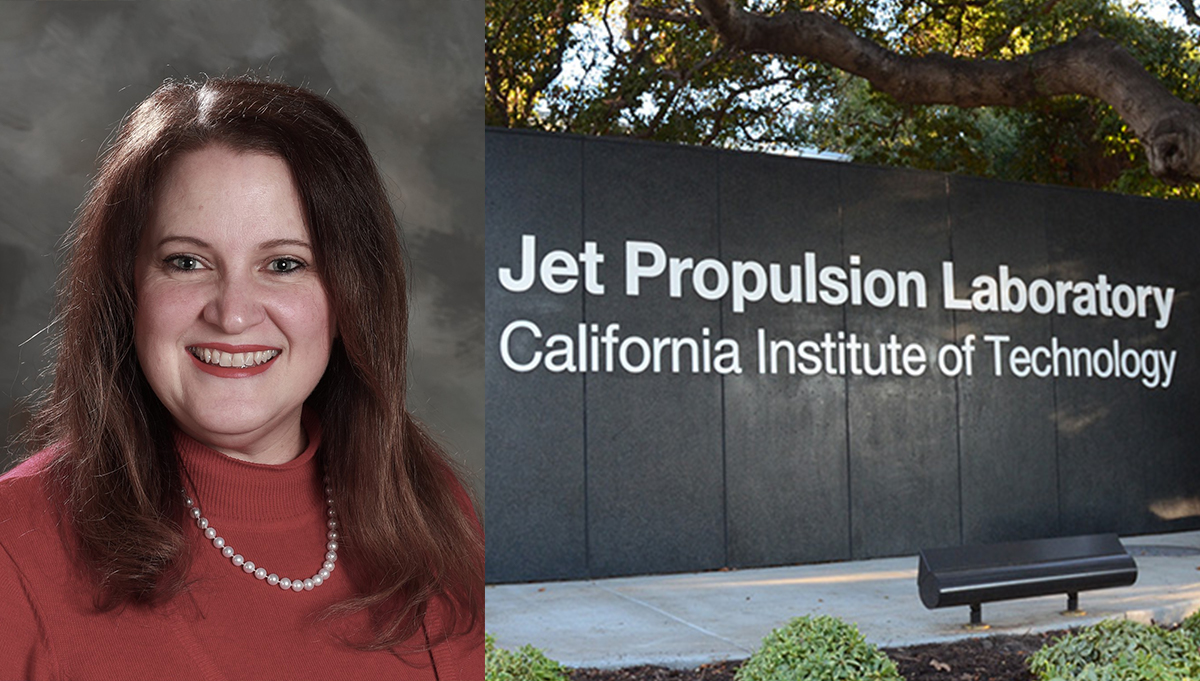
STI Knowledge Services Lead Corey Portalatin-Berrien.
Credit: NASA
Corey Portalatin-Berrien of NASA’s Scientific and Technical Information Program Office discusses knowledge sharing.
Corey Portalatin-Berrien is the Data Manager for NASA’s Scientific and Technical Information (STI) Program and serves as the Knowledge Services Lead. Portalatin-Berrien joined NASA in 2015. Her background includes sharing and disseminating information in government, nonprofit and private industries.
The STI Program was established to support the objectives of NASA’s missions and research. STI supports the advancement of aerospace knowledge and contributes to U.S. competitiveness in aerospace research and development. The program is essential to help NASA avoid duplication of research by sharing information and ensuring that the U.S. maintains its preeminence in aerospace-related industries and education. The NASA STI Program acquires, processes, archives, announces and disseminates NASA STI and acquires worldwide STI of critical importance to NASA and the nation.
What are your thoughts on how knowledge sharing affects mission success?
Sharing knowledge and lessons learned is critical to mission and program success. By actively sharing information and inviting conversation, we invite collaboration and real-time problem solving. This can ultimately lead to time and money saved if another team’s lessons learned are proactively applied to a different problem set. When we work together and share information, it better supports the success of our programs, mission and agency.
How do you think NASA’s technical workforce benefits from knowledge sharing?
There are a multitude of benefits—from actively collaborating and applying knowledge to solving mission problems to the development of professional networks—which improve communication and awareness. Sharing knowledge benefits our entire workforce.
Are you observing any trends or cultural shifts that affect knowledge management going forward?
Leveraging technology to support the processing and discoverability of information is especially exciting. As the community leans forward and embraces auto-tagging and classification, machine-aided ontological and taxonomy mapping, and knowledge graphs, we gain a deeper understanding of the relationship between information sets, and process information for faster dissemination.
There is an increasing demand for measuring the value of information and knowledge. Within the industry, it is rapidly becoming a requirement to embed analytics and ROI measurement within knowledge management tools and capabilities.
What impact are technologies such as machine learning and artificial intelligence beginning to have on your knowledge sharing activities?
Machine learning (ML) and artificial intelligence (AI) enable access to and use of information and data to support NASA objectives and missions. AI and machine learning allow for improved efficiency surrounding curation and discoverability, minimizing the manual effort required to get documents ready for consumption.
An example of a use case includes the integration of a sensitivity scanner during the document curation process. The ML tool could scan documents for sensitive markings and auto-tag the document for the appropriate level of dissemination. The opportunities to embed and leverage artificial intelligence and machine learning are only limited by our imagination. This technology can augment human processes, freeing up our teams to perform high value activities, which have an even larger impact on the dissemination of NASA knowledge.
What’s the biggest misunderstanding that people have about knowledge?
People sometimes think that a knowledge set is only relevant to a specific use case, and as a result is not worth sharing. Most lessons learned and key concepts can be shared to the greater benefit of the agency. While details may not be widely applicable, concepts can be shared and applied.









